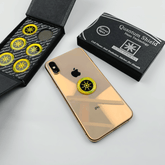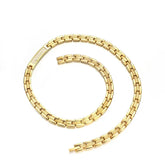How Far Away Should Your Cell Phone Be When You Sleep?
Your phone’s always within arm’s reach, right? It’s your alarm, your late-night scroll buddy, maybe even your white noise machine. But keeping it close while you sleep might mess with your health more than you think.
From sketchy radiation vibes to jacked-up sleep cycles, there’s legit reasons to give your phone some space at night. So, How Far Away Should Your Cell Phone Be When You Sleep?? Let’s break it down.
Quick Answer: Keep your phone at least three feet away from your bed to cut down on radiation exposure, blue light interference, and sleep disruptions. Better yet, stash it in another room for the ultimate snooze upgrade.
Key Takeaways:
- Keep it three feet away: Minimizes radiation, blue light, and distractions.
- Another room is best: Total phone ban = best sleep ever.
- Blue light is the real villain: It messes with melatonin and sleep quality.
- Cancer risk is low but unproven: Better safe than sorry—distance is key.
- Create a sleep sanctuary: No screens, calm vibes, and a solid bedtime routine.
Why Your Phone’s Nighttime Proximity Matters
Phones aren’t just gadgets—they’re mini radiation hubs emitting radiofrequency (RF) waves and blue light that can throw your body out of whack. Sleeping with your phone glued to your side (or under your pillow—yikes) could lead to:
- Crappy sleep quality
- Stress and anxiety spikes
- Potential long-term health risks (still under study, but why gamble?)
Here’s the deal: the closer your phone is, the more it messes with you. Let’s unpack the science, bust some myths, and give you practical tips to sleep better without ditching your tech.
Is Sleeping Next to Your Phone Dangerous?

You’ve probably heard the whispers: “Sleeping with your phone causes cancer!” or “It’ll fry your brain!” Let’s clear the air with facts.
The Radiation Question
Phones emit non-ionizing radiation (RF waves) to connect to cell towers (Curious about what EMF is and how it works?). Unlike X-rays or UV rays, this type isn’t strong enough to break DNA. But some studies raise eyebrows:
- A 2018 National Toxicology Program study found “clear evidence” of heart tumors in male rats exposed to high RF radiation levels. Human risks? Still unclear, but it’s enough to make you think twice.
- The World Health Organization labels RF radiation as a “possible carcinogen” (Class 2B), same as coffee or pickled veggies. No hard proof links it to cancer, but long-term exposure might not be harmless. Find out what EMF sensitivity is and how it affects people What You Need to Know About EMF Sensitivity.
So, does sleeping with your phone under your pillow give you cancer? Probably not. But keeping it close exposes you to low-level radiation all night, and science hasn’t ruled out cumulative effects.
Blue Light and Your Sleep
Your phone’s screen blasts blue light, which tricks your brain into thinking it’s daytime. This screws with melatonin, the hormone that tells your body it’s time to crash.
A 2014 Harvard study showed blue light exposure before bed delays melatonin release by up to 3 hours, making it harder to fall asleep and stay asleep.
Fire Hazards
Phones can overheat, especially if they’re charging or tucked under blankets. In 2014, a teen’s Samsung Galaxy caught fire under her pillow. Rare? Sure. Scary? Heck yeah.
Key Takeaway: Sleeping with your phone nearby isn’t a death sentence, but it’s not doing you any favors either. Distance is your friend.
How Your Phone Screws Up Your Sleep
Let’s talk about why your phone’s the ultimate sleep saboteur. Here’s what happens when it’s too close:
|
Issue |
Cause |
Impact |
|
Poor Sleep Quality |
Blue light, notifications |
Less melatonin, groggy mornings |
|
Insomnia |
Overstimulation |
Trouble falling/staying asleep |
|
Distractions |
Addictive apps, alerts |
Fragmented sleep cycles |
|
Anxiety |
Stressful content |
Restless nights, mental fatigue |
1. Poor Sleep Quality
- Blue light suppresses melatonin, leaving you tossing and turning.
- A 2011 study found 90% of Americans use tech devices before bed, with phones being the worst offender for young adults. Result? Lousy sleep and groggy mornings.
- Long-term, bad sleep ups your risk for obesity, diabetes, and heart disease, per decades of research.
2. Insomnia
- Scrolling through TikTok or doomscrolling news keeps your brain wired. A 2018 PLOS One study showed phone use before bed cuts sleep by an average of 48 minutes.
- Notifications buzzing at 2 a.m.? That’s your sleep cycle getting wrecked.
3. Distractions
- Phones are addiction machines. One “quick check” turns into an hour of Instagram. Your bed becomes a scrolling zone, not a sleep sanctuary.
- A 2020 study linked bedtime phone use to “sleep procrastination,” where you delay sleep for no good reason.
4. Anxiety
- Late-night texts or work emails spike stress. A 2019 study found heavy phone use before bed boosts anxiety, making it harder to relax.
How Far Away Should Your Cell Phone Be When You Sleep?
Alright, let’s get to the nitty-gritty. Experts agree: three feet is the minimum safe distance to reduce RF exposure and sleep disruptions. Here’s why and how to make it happen:
How Far Should Your Phone Be When You Sleep? (Simple Rules)
|
Situation |
Recommended Distance |
Why? |
|
Sleeping (general) |
3+ feet (1 meter) |
Lowers RF exposure & prevents sleep interruptions. |
|
Charging overnight |
Same room, but not on bed |
Reduces fire risk (overheating). |
|
Using as an alarm |
Across the room (so you have to get up) |
Stops midnight scrolling. |
|
Pregnant or concerned? |
Another room or Airplane Mode |
Extra precaution. |
Why Three Feet?
- RF Radiation: Levels drop significantly with distance (thanks, Inverse Square Law). At three feet, exposure is minimal compared to having your phone on your nightstand.
- Blue Light: Even a quick glance at your screen at night can zap melatonin. Keeping it out of reach stops the temptation.
- Notifications: Three feet means you’re less likely to hear or react to pings.
Charging Concerns
Is it bad to sleep with your phone charging next to you? Not ideal. Charging phones generate more heat and RF activity.
A 2021 study noted charging devices emit slightly higher radiation. Plus, cords can tangle or overheat. Keep it three feet away, even when plugged in.
The Gold Standard: Another Room
For max benefits, banish your phone to the kitchen or living room. A 2016 study found people who kept phones out of the bedroom slept longer and felt more refreshed.
- Bonus: You won’t snooze your alarm ten times.
Quick Tips for Distance
- Use a real alarm clock: Ditch the phone alarm excuse.
- Airplane mode: Cuts RF emissions if you must keep it nearby.
- Nightstand no-no: Put it on a dresser or shelf across the room.
Busting Myths: Does Sleeping with Your Phone Cause Brain Cancer?
The cancer scare is the biggest phone-sleeping myth. Here’s the truth:
- No solid evidence: The American Cancer Society and National Cancer Institute say RF radiation from phones doesn’t cause brain cancer. Learn more about the research behind cell phone radiation and cancer risks Does Cell Phone Radiation Cause Cancer?
- But…: Some studies, like a 2011 INTERPHONE study, noted a slight risk increase for heavy users (30+ minutes daily against the head). Sleeping with your phone nearby adds to exposure time, so why risk it?
- Precautionary principle: Until science settles the debate, keep your phone at a distance to play it safe, especially if you’re pregnant. Learn why EMF exposure matters during pregnancy.
Key Takeaway: Cancer fears are overblown, but minimizing exposure is a smart move.
Practical Tips to Create a Phone-Free Sleep Zone
Ready to kick your phone out of bed? Here’s how to make your bedroom a sleep haven:
Set a Screen Curfew
- Stop using screens 1 hour before bed. A 2015 study showed this boosts melatonin and cuts insomnia.
- Try reading a book, journaling, or sipping herbal tea instead.
Make Your Bedroom Chill
- Keep it dark (blackout curtains), quiet (earplugs), and cool (65-68°F). If you’ve got kids, you’ll also want to protect them from EMF exposure to ensure their sleep is safe and sound.
- A comfy mattress and pillows seal the deal.
Stash Your Phone
- Charge it in another room or at least three feet from your bed.
- Use a drawer to hide it from sight (out of sight, out of mind).
Get an Alarm Clock
- A cheap analog clock works fine. No more “I need my phone for the alarm” excuse.
Talk to Your Partner
- If you share a bed, agree on no phones after 10 p.m. Teamwork makes the dream work. For more ways to stay safe, check out how to protect yourself from EMF radiation.
Bullet Points: Why Go Phone-Free?
- Deeper, longer sleep
- Less stress and anxiety
- Lower (potential) radiation exposure
- Happier mornings, no grogginess
What About EMF Protection Products?
You’ve seen ‘EMF phone cases, stickers, or pendants claiming to block EMF radiation. Do they work?
- The Good: Some products, like those from EMFTITAN, claim to reduce Specific Absorption Rate (SAR) by up to 80% and thermal effects by 20%. Lab tests back some of these claims. You might also consider EMF protection Necklace/jewelry, EMF Protection Anti-Radiation Stickers for Phone for another layer of defense, or check Benefits of Wearing EMF Protection Jewelry, though distance remains the best solution.
- The Bad: Many “anti-radiation” cases don’t work as advertised. You can read complete about it here Do Anti-5G Stickers and Chips Really Work? A 2020 FCC report warned some cases increase radiation by trapping signals, making your phone work harder. Wondering how EMF stickers work check this How Do EMF Stickers Work? A Clear Guide to EMF Protection? They’re not always the fix they claim to be.
- The Verdict: Stick to distance over gadgets. It’s free and foolproof.
FAQs
Is it bad to sleep with your phone charging next to you?
Charging phones emit slightly more heat and RF activity. Keep it three feet away to stay safe.
Can sleeping next to your phone cause brain cancer?
No solid evidence links phone radiation to cancer, but long-term exposure is still under study. Play it safe with distance.
How far should your phone be from your face?
At least 12 inches to cut blue light exposure and strain. For sleep, three feet or more is ideal.
Does airplane mode stop radiation?
Yes, it disables RF emissions, but you’ll still get blue light if you use the screen.
Final Thoughts
Your phone’s a lifeline, but it doesn’t need to crash your sleep party. Keeping it three feet away—or better yet, in another room—cuts risks and boosts your snooze game.
With blue light, radiation, and distractions out of the picture, you’ll wake up feeling like a million bucks. So, tonight, give your phone the boot and catch some serious Z’s. Your body will thank you.
References
-
National Toxicology Program (2018). Cell Phone Radiofrequency Radiation Studies:
https://www.niehs.nih.gov/sites/default/files/NTP_cell_phone_factsheet_jan_2024_508.pdf
(Also see related resources at https://ntp.niehs.nih.gov/go/cellphone) -
Harvard Medical School (2014). Blue Light Has a Dark Side:
https://www.health.harvard.edu/staying-healthy/blue-light-has-a-dark-side
(Additional Harvard Medicine Magazine article on blue light: https://magazine.hms.harvard.edu/articles/blues-cues) -
World Health Organization (2011). IARC Classifies RF Radiation as Possible Carcinogen:
https://www.iarc.who.int/wp-content/uploads/2018/07/pr208_E.pdf (IARC Press Release 2011) -
American Cancer Society (2020). Cellular Phones and Cancer Risk:
The exact link was not in the search results, but the American Cancer Society's page on this topic is available at:
https://www.cancer.org/cancer/cancer-causes/radiation-exposure/cellular-phones.html - Ariel Tolfree, a 13-year-old girl from Texas, placed her Samsung Galaxy S4 under her pillow while sleeping, and the phone caught fire, burning the pillow and mattress beneath it https://www.fox13seattle.com/news/samsung-phone-caught-fire-under-sleeping-girls-pillow-family-says





